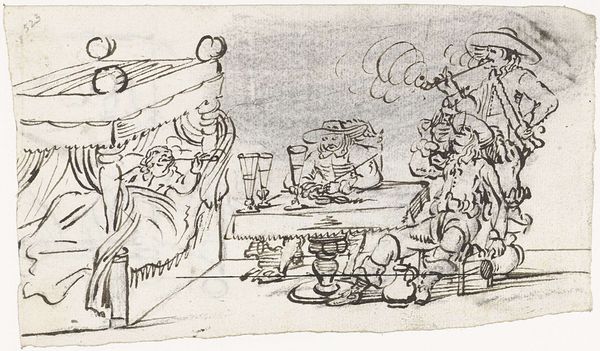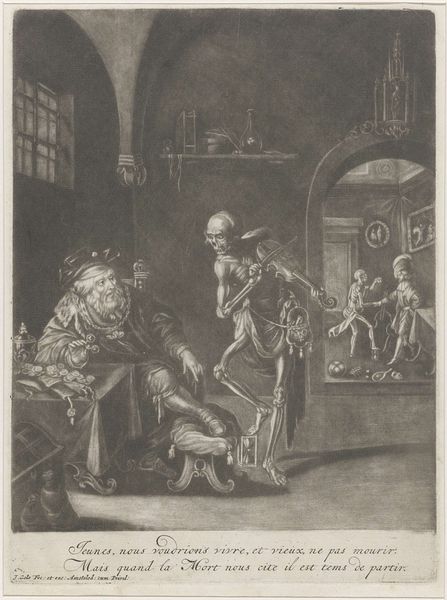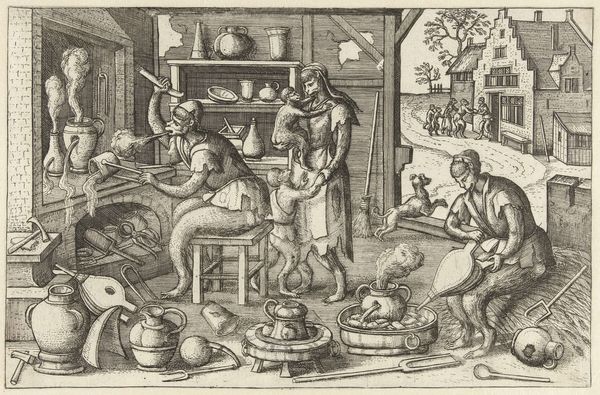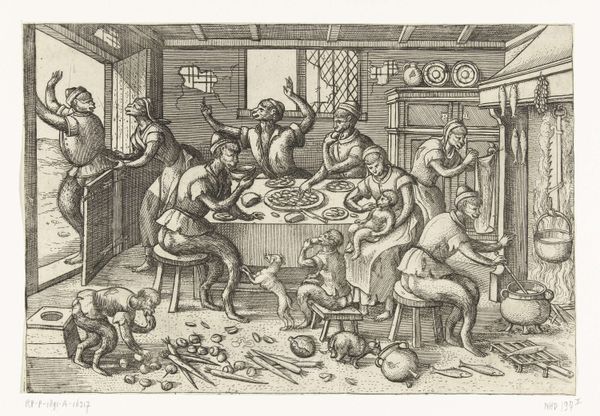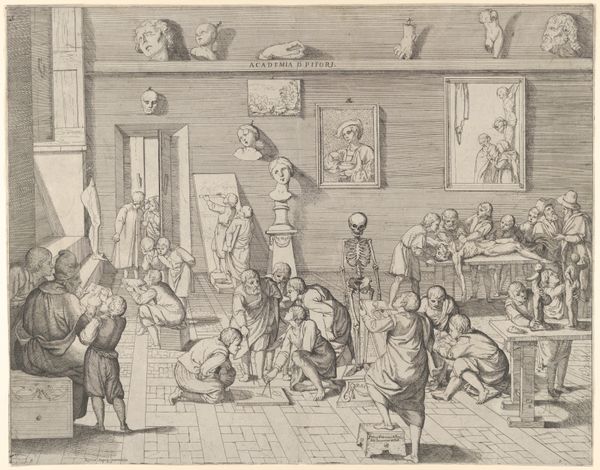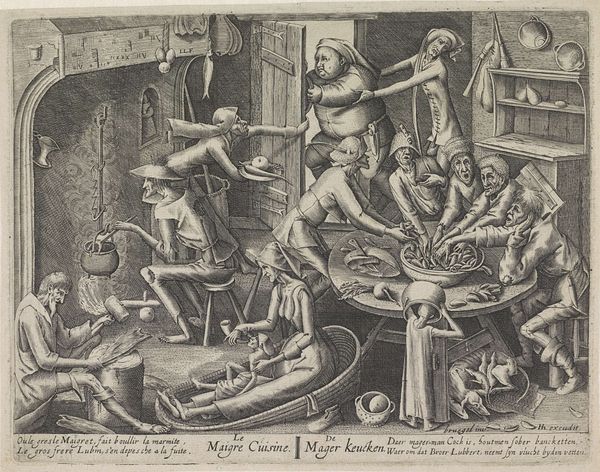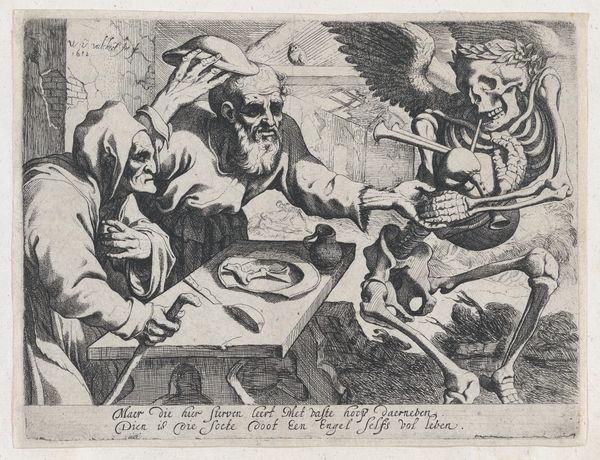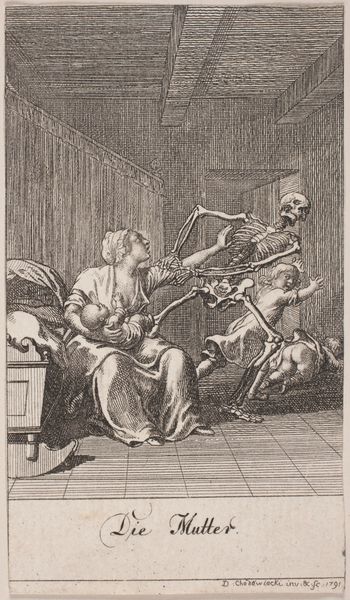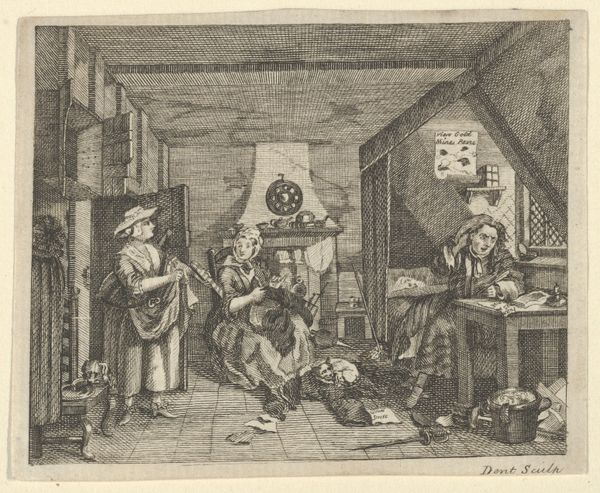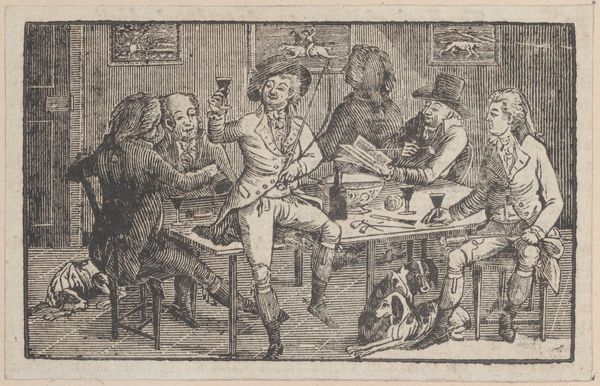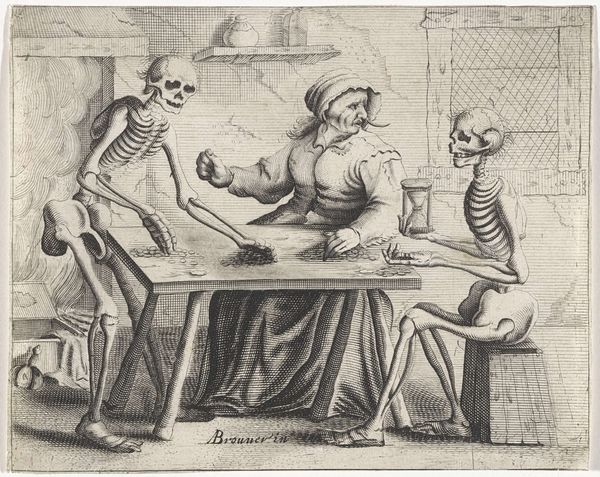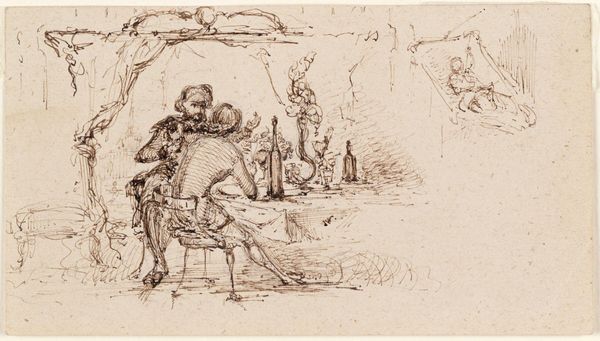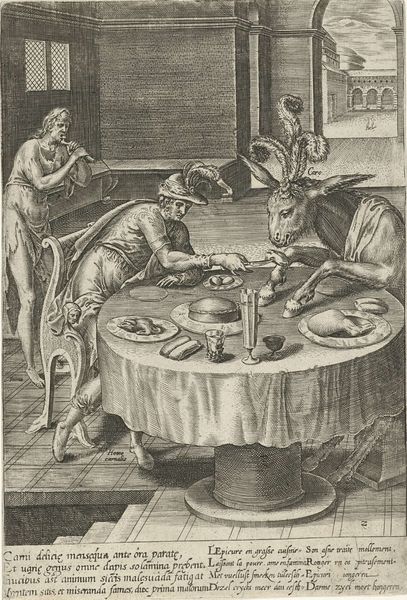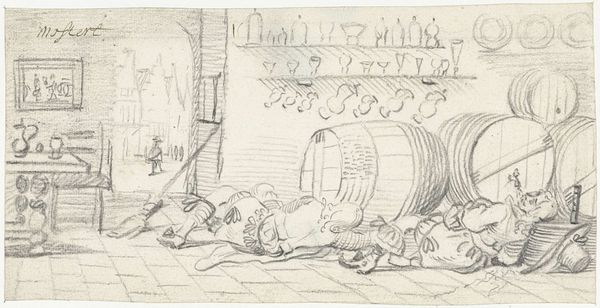
drawing, ink, pen
#
portrait
#
drawing
#
dutch-golden-age
#
pen illustration
#
pen sketch
#
figuration
#
ink
#
pen
#
genre-painting
Dimensions: height 123 mm, width 197 mm
Copyright: Rijks Museum: Open Domain
Editor: Here we have "Interior with Three Smoking and Drinking Soldiers" made around 1654 by Gesina ter Borch. It's a pen and ink drawing. What strikes me most is how lively it is, despite the limited medium. I’m curious, what story do you see unfolding in this piece? Curator: I see the performance of masculinity and social status in the Dutch Golden Age. Genre scenes like this gained popularity, offering glimpses into everyday life, yet often with a subtle moral undercurrent. The act of smoking and drinking, associated with male camaraderie and leisure, also carried implications of excess and the transience of worldly pleasures. Note how the dog, a symbol of loyalty, is present, yet seemingly detached from the rowdy behaviour of its owners. Editor: Interesting! So the scene isn’t simply a snapshot of daily life but a carefully constructed image intended for public consumption? Curator: Precisely. Ter Borch, as a woman artist in the 17th century, occupies a unique position. The question is: to what extent did her gender influence her interpretation of this scene? Is she critiquing these men, or merely observing them? How might this scene have been received within the cultural context of the time, and how might it be perceived now? Editor: The presence of a female artist certainly adds a new layer to how we read the work. I initially viewed the image through an aesthetic lens, admiring her economy of lines, but framing it in socio-historical terms definitely makes it more interesting. Curator: Thinking about art as part of broader cultural conversations is critical, and I appreciate that you made that leap! Editor: Thank you for shedding some light on this! I’ll certainly think of art and its history from a wider perspective.
Comments
No comments
Be the first to comment and join the conversation on the ultimate creative platform.
